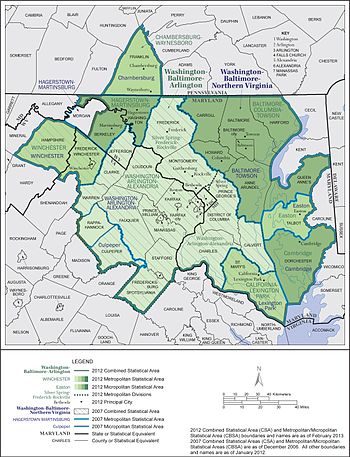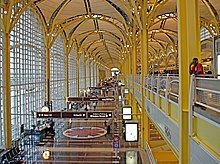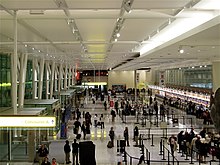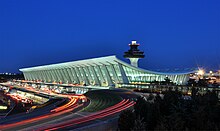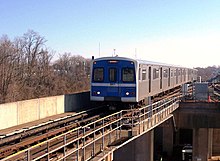J u m p t o c o n t e n t
M a i n m e n u
M a i n m e n u
N a v i g a t i o n
● M a i n p a g e ● C o n t e n t s ● C u r r e n t e v e n t s ● R a n d o m a r t i c l e ● A b o u t W i k i p e d i a ● C o n t a c t u s ● D o n a t e
C o n t r i b u t e
● H e l p ● L e a r n t o e d i t ● C o m m u n i t y p o r t a l ● R e c e n t c h a n g e s ● U p l o a d f i l e
S e a r c h
Search
A p p e a r a n c e
● C r e a t e a c c o u n t ● L o g i n
P e r s o n a l t o o l s
● C r e a t e a c c o u n t ● L o g i n
P a g e s f o r l o g g e d o u t e d i t o r s l e a r n m o r e ● C o n t r i b u t i o n s ● T a l k
( T o p )
1 C o m p o n e n t s o f t h e c o m b i n e d s t a t i s t i c a l a r e a
2 R e g i o n a l o r g a n i z a t i o n s
T o g g l e R e g i o n a l o r g a n i z a t i o n s s u b s e c t i o n
2 . 1 M e t r o p o l i t a n W a s h i n g t o n C o u n c i l o f G o v e r n m e n t s
2 . 2 B a l t i m o r e M e t r o p o l i t a n C o u n c i l
3 P r i n c i p a l c i t i e s
T o g g l e P r i n c i p a l c i t i e s s u b s e c t i o n
3 . 1 M a j o r c i t i e s
3 . 2 B a l t i m o r e a r e a
3 . 3 W a s h i n g t o n , D . C . a r e a
4 E c o n o m y
T o g g l e E c o n o m y s u b s e c t i o n
4 . 1 P r i m a r y i n d u s t r i e s
4 . 1 . 1 B i o t e c h n o l o g y
4 . 1 . 2 D e f e n s e c o n t r a c t i n g
4 . 2 N o t a b l e c o m p a n y h e a d q u a r t e r s i n t h e r e g i o n
4 . 2 . 1 M a r y l a n d
4 . 2 . 2 N o r t h e r n V i r g i n i a
4 . 2 . 3 W a s h i n g t o n , D . C .
5 S p o r t s
T o g g l e S p o r t s s u b s e c t i o n
5 . 1 T a b l e o f p r o f e s s i o n a l t e a m s a n d v e n u e s
6 T r a n s p o r t a t i o n
T o g g l e T r a n s p o r t a t i o n s u b s e c t i o n
6 . 1 C o m m e r c i a l a i r p o r t s
6 . 2 R a i l t r a n s i t s y s t e m s
6 . 3 M a j o r h i g h w a y s
7 S e e a l s o
8 R e f e r e n c e s
T o g g l e t h e t a b l e o f c o n t e n t s
W a s h i n g t o n – B a l t i m o r e c o m b i n e d s t a t i s t i c a l a r e a
1 0 l a n g u a g e s
● A s t u r i a n u ● F r a n ç a i s ● 日 本 語 ● P o l s k i ● Р у с с к и й ● S v e n s k a ● У к р а ї н с ь к а ● ا ر د و ● T i ế n g V i ệ t ● 中 文
E d i t l i n k s
● A r t i c l e ● T a l k
E n g l i s h
● R e a d ● E d i t ● V i e w h i s t o r y
T o o l s
T o o l s
A c t i o n s
● R e a d ● E d i t ● V i e w h i s t o r y
G e n e r a l
● W h a t l i n k s h e r e ● R e l a t e d c h a n g e s ● U p l o a d f i l e ● S p e c i a l p a g e s ● P e r m a n e n t l i n k ● P a g e i n f o r m a t i o n ● C i t e t h i s p a g e ● G e t s h o r t e n e d U R L ● D o w n l o a d Q R c o d e ● W i k i d a t a i t e m
P r i n t / e x p o r t
● D o w n l o a d a s P D F ● P r i n t a b l e v e r s i o n
I n o t h e r p r o j e c t s
● W i k i m e d i a C o m m o n s
A p p e a r a n c e
C o o r d i n a t e s : 3 8 ° 5 8 ′ N 7 7 ° 1 9 ′ W / 3 8 . 9 7 ° N 7 7 . 3 2 ° W / 38.97; -77.32
F r o m W i k i p e d i a , t h e f r e e e n c y c l o p e d i a
( R e d i r e c t e d f r o m B a l t i m o r e - W a s h i n g t o n M e t r o p o l i t a n A r e a )
Combined Statistical Area in the United States
Washington–Baltimore
Washington–Baltimore–Arlington,
Interactive Map of Washington–Baltimore–Arlington,
DC–VA–MD–WV–PA
CSA
Washington–Arlington–Alexandria
MSA
Baltimore–Columbia–Towson, MD MSA
Hagerstown–Martinsburg, MD–WV MSA
Lexington Park, MD MSA
Chambersburg, PA MSA
Winchester, VA–WV MSA
Lake of the Woods, VA μSA
Cambridge, MD μSA
Coordinates: 38°58′N 77°19′W / 38.97°N 77.32°W / 38.97; -77.32 Country United States State or area
Constituent metropolitan & micropolitan areas Core areas:
Outlying areas:
Principal cities
In Maryland:
Annapolis
Bethesda
Bowie
Columbia
Easton
Frederick
Gaithersburg
Hagerstown
Lexington Park
Rockville
Silver Spring
Towson
In Pennsylvania:
Waynesboro
In Virginia:
Alexandria
Fairfax
Falls Church
Fredericksburg
Manassas
Manassas Park
Reston
Tysons
Winchester
In West Virginia:
• CSA
9,973,383 (3rd ) Time zone UTC-5 (EST ) • Summer (DST ) UTC-4 (EDT )Area codes 202/771 , 301/240/227 , 304/681 , 410/443/667 , 540/826 , 703/571 , 717/223
Map of the 2012 OMB -designated Washington-Baltimore-Arlington, DC-MD-VA-WV-PA Combined Statistical Area.
The Washington–Baltimore combined metropolitan statistical area is a statistical area , including the overlapping metropolitan areas of Washington, D.C. and Baltimore . The region includes Central Maryland , Northern Virginia , three counties in the Eastern Panhandle of West Virginia , and one county in south-central Pennsylvania . It is the most educated, highest-income, and third-most populous combined statistical area in the United States behind New York City–Newark, NJ and Los Angeles–Long Beach .[1] [2]
The area is designated by the Office of Management and Budget (OMB) as the Washington–Baltimore–Arlington, DC–MD–VA–WV–PA Combined Statistical Area . It is composed primarily of two major metropolitan statistical areas (MSAs), the Washington–Arlington–Alexandria, DC–VA–MD–WV MSA and the Baltimore–Columbia–Towson, Maryland Metropolitan Statistical Area. Five smaller urban areas not contiguous to the main urban area but having strong commuting ties with the main area are included in the metropolitan area:[3] Hagerstown–Martinsburg, Maryland–West Virginia MSA, the Chambersburg–Waynesboro, Pennsylvania MSA, the Winchester, VA–WV MSA , the California–Lexington Park, Maryland MSA, and the Easton, Maryland micropolitan statistical area (μSA).
Some counties, such as Caroline and King George County, Virginia , are not officially designated by OMB as members of this metropolitan area but still consider themselves members anyway.[4] [5] [6] [7] [8] 2020 census was 9,973,383. The area's most-populous city is Washington, D.C. with a population of 689,545, and the area's most populous county is Fairfax County, Virginia , with a population of 1,150,309.[9]
Components of the combined statistical area
[ edit ]
The counties and independent cities and their groupings that comprise the area are listed below with their 2012 population estimates. Central counties/cities (designated as such by OMB) for each MSA are shown in italics.
Washington–Arlington–Alexandria, DC–VA–MD–WV Metropolitan Area (5,860,342)
Arlington–Alexandria–Reston, VA–WV Metropolitan Division
Arlington County, Virginia
Clarke County, Virginia
Culpeper County, Virginia
Fairfax County, Virginia
Fauquier County, Virginia
Loudoun County, Virginia
Prince William County, Virginia
Rappahannock County, Virginia
Spotsylvania County, Virginia
Stafford County, Virginia
Warren County, Virginia
Alexandria, Virginia
Fairfax, Virginia
Falls Church, Virginia
Fredericksburg, Virginia
Manassas, Virginia
Manassas Park, Virginia
Jefferson County, West Virginia
Frederick–Gaithersburg–Bethesda, MD Metropolitan Division (1,244,291)
Washington, DC–MD Metropolitan Division (4,616,051)
Baltimore–Columbia–Towson, MD Metropolitan Area (2,753,149)
Hagerstown–Martinsburg, MD–WV Metropolitan Area (256,278)
Chambersburg, PA Metropolitan Area (151,275)
Winchester, VA–WV Metropolitan Area (130,907)
California–Lexington Park, MD Metropolitan Area (108,987)
Easton, MD Micropolitan Area (38,098)
Lake of the Woods, VA Micropolitan Area
Cambridge, MD Micropolitan Area
Regional organizations
[ edit ]
Metropolitan Washington Council of Governments
[ edit ]
Founded in 1957, the Metropolitan Washington Council of Governments (MWCOG) is a regional organization of 23 Washington-area local governments, members of the Maryland and Virginia state legislatures, the U.S. Senate , and the U.S. House of Representatives . MWCOG provides a forum for discussion and the development of regional responses to issues regarding the environment, transportation, public safety, homeland security, affordable housing, community planning, and economic development.[10]
The National Capital Region Transportation Planning Board, a component of MWCOG, is the federally designated Metropolitan Planning Organization for the metropolitan Washington area.[11]
Baltimore Metropolitan Council
[ edit ]
The Baltimore Metropolitan Council is the equivalent organization for the Baltimore portion of the combined Baltimore–Washington metropolitan area.[12] [13]
The Baltimore Regional Transportation Board is the federally recognized Metropolitan Planning Organization for transportation planning in the Baltimore region.[13]
Principal cities
[ edit ]
Major cities
[ edit ]
Baltimore area
[ edit ]
Baltimore
Aberdeen, Maryland
Annapolis, Maryland
Arbutus, Maryland
Bel Air, Maryland
Brooklyn, Maryland
Brooklyn Park, Maryland
Catonsville, Maryland
Cockeysville, Maryland
Columbia, Maryland
Curtis Bay, Maryland
Dundalk, Maryland
Eldersburg, Maryland
Elkridge, Maryland
Ellicott City, Maryland
Essex, Maryland
Fullerton, Maryland
Glen Burnie, Maryland
Halethorpe, Maryland
Linthicum, Maryland
Lutherville-Timonium, Maryland
Middle River, Maryland
North Laurel, Maryland
Owings Mills, Maryland
Overlea, Maryland
Parkville, Maryland
Pasadena, Maryland
Perry Hall, Maryland
Pikesville, Maryland
Randallstown, Maryland
Reisterstown, Maryland
Savage, Maryland
Severna Park, Maryland
Towson, Maryland
Westminster, Maryland
Woodlawn, Maryland
[ edit ]
Washington, D.C.
Bethesda, Maryland
Bowie, Maryland
Chevy Chase, Maryland
College Park, Maryland
Frederick, Maryland
Gaithersburg, Maryland
Germantown, Maryland
Laurel, Maryland
Potomac, Maryland
Rockville, Maryland
Silver Spring, Maryland
Upper Marlboro, Maryland
Alexandria, Virginia
Annandale, Virginia
Arlington, Virginia
Ashburn, Virginia
Chantilly, Virginia
Fairfax, Virginia
Falls Church, Virginia
Fredericksburg, Virginia
Great Falls, Virginia
Herndon, Virginia
Langley, Virginia
Leesburg, Virginia
Manassas, Virginia
Manassas Park, Virginia
Massaponax, Virginia
McLean, Virginia
Mt. Vernon, Virginia
Reston, Virginia
Springfield, Virginia
Tysons, Virginia
Vienna, Virginia
Charles Town, West Virginia
Martinsburg, West Virginia [15]
Economy
[ edit ]
Primary industries
[ edit ]
Biotechnology
[ edit ]
Maryland's Washington suburbs are a major center for biotechnology . Prominent local biotechnology companies include MedImmune , United Therapeutics , The Institute for Genomic Research , Human Genome Sciences , and the Howard Hughes Medical Institute .
Defense contracting
[ edit ]
Many defense contractors are based in Northern Virginia and Montgomery County, Maryland to be close to the Pentagon in Arlington. Local defense contractors include Lockheed Martin , the largest, as well as Northrop Grumman , General Dynamics , BAE Systems Inc. , Computer Sciences Corporation (CSC), Booz Allen Hamilton , Leidos , Science Applications International Corporation (SAIC), and Orbital Sciences Corporation .
Notable company headquarters in the region
[ edit ]
Numbers denote Fortune 500 ranking.
Maryland
[ edit ]
Baltimore area:
Washington area:
Northern Virginia
[ edit ]
[ edit ]
Sports
[ edit ] M&T Bank Stadium in Baltimore , home field of the Baltimore Ravens of the National Football League Commanders Field in Landover, Maryland , home of the Washington Commanders of the National Football League
Table of professional teams and venues
[ edit ]
^ a b c d Year team moved to current location
^ Founded as D.C. United Women ; rebranded as Washington Spirit in 2012 and started NWSL play in 2013.
Transportation
[ edit ] Ronald Reagan Washington National Airport in Crystal City, Virginia , the nation's 23rd-busiest airport and busiest airport in the Washington-Baltimore areaBaltimore/Washington International Airport (BWI), the nation's 25th-busiest airport and second-busiest airport in the Washington-Baltimore areaDulles International Airport , the nation's 28th-busiest airport and third-busiest airport in the Washington-Baltimore areaWashington Metro The Capital Beltway (I-495) in Northern Virginia Baltimore Metro SubwayLink
Commercial airports
[ edit ]
Rail transit systems
[ edit ]
Major highways
[ edit ]
Interstates
U.S. Routes
State Routes
See also
[ edit ]
References
[ edit ]
^ "OMB BULLETIN NO. 18-04: Revised Delineations of Metropolitan Statistical Areas, Micropolitan Statistical Areas, and Combined Statistical Areas, and Guidance on Uses of the Delineations of These Areas" . Office of Management and Budget. September 14, 2018.
^ "Caroline County Economic Development" . Archived from the original on 2015-07-11. Retrieved 2015-07-21 .
^ "Washington DC South" . washingtondcsouth.com . Retrieved 16 November 2017 .
^ "King George County Department of Economic Development" . King George County Department of Economic Development . Retrieved 16 November 2017 .
^ Gardner, D'Vera Cohn and Amy (16 March 2006). "3 Virginia Exurbs Near Top of U.S. in Growth" . Washingtonpost.com . Retrieved 16 November 2017 .
^ "FAMPO Technical Committee – FAMPO" . Fampo.gwregion.org . Retrieved 16 November 2017 .
^ "2020 Population and Housing State Data" . U.S. Census Bureau . August 12, 2021. Retrieved September 5, 2021 .
^ "COG & Our Region - Metropolitan Washington Council of Governments" . Mwcog.org . Retrieved 16 November 2017 .
^ "Transportation Planning Board - Transportation - Metropolitan Washington Council of Governments" . Mwcog.org . Retrieved 16 November 2017 .
^ O'Leary, __Sara Ann. "Home - Baltimore Metropolitan Council" . Baltometro.org . Retrieved 16 November 2017 .
^ a b About BMC – Baltimore Metropolitan Council Archived 2007-05-01 at the Wayback Machine
^ "U.S. Census Bureau – Principal cities of metropolitan and micropolitan statistical areas" . Census.gov . Retrieved 16 November 2017 .
^ "Metropolitan And Micropolitan Statistical Areas And Principal Cities, November 2007, with codes" . Census.gov . Retrieved 16 November 2017 .
^ "Whiting-Turner Contracting on the Forbes America's Largest Private Companies List" . Forbes.com . Retrieved 16 November 2017 .
^ "The Boeing Company: General Information" . www.boeing.com . Retrieved 2023-07-31 .
^ As according to Federal Aviation Administration CY 2011 Enplanement Data [permanent dead link [update]
t
e
Principal cities
Communities
Counties
Geography
Water
Transportation
See also
t
e
Core cities are metropolitan core cities of at least a million people. The other areas are urban areas of cities that have an urban area of 150,000+ or of a metropolitan area of at least 250,000+. Satellite cities are in italics.
Mid-Atlantic
Core cities
Other areas
Combined areas
New England
Core cities
Other areas
Combined areas
Other megaregions
R e t r i e v e d f r o m " https://en.wikipedia.org/w/index.php?title=Washington–Baltimore_combined_statistical_area&oldid=1234852811 " C a t e g o r i e s : ● B a l t i m o r e – W a s h i n g t o n m e t r o p o l i t a n a r e a ● B a l t i m o r e m e t r o p o l i t a n a r e a ● W a s h i n g t o n m e t r o p o l i t a n a r e a ● G e o g r a p h y o f B a l t i m o r e ● G e o g r a p h y o f W a s h i n g t o n , D . C . ● N o r t h e r n V i r g i n i a ● R e g i o n s o f M a r y l a n d ● R e g i o n s o f V i r g i n i a ● R e g i o n s o f P e n n s y l v a n i a ● R e g i o n s o f W e s t V i r g i n i a ● N o r t h e a s t m e g a l o p o l i s H i d d e n c a t e g o r i e s : ● P a g e s u s i n g g a d g e t W i k i M i n i A t l a s ● P a g e s w i t h n o n - n u m e r i c f o r m a t n u m a r g u m e n t s ● W e b a r c h i v e t e m p l a t e w a y b a c k l i n k s ● A l l a r t i c l e s w i t h d e a d e x t e r n a l l i n k s ● A r t i c l e s w i t h d e a d e x t e r n a l l i n k s f r o m N o v e m b e r 2 0 1 6 ● A r t i c l e s w i t h p e r m a n e n t l y d e a d e x t e r n a l l i n k s ● A r t i c l e s c o n t a i n i n g p o t e n t i a l l y d a t e d s t a t e m e n t s f r o m 2 0 1 0 ● A l l a r t i c l e s c o n t a i n i n g p o t e n t i a l l y d a t e d s t a t e m e n t s ● A r t i c l e s w i t h s h o r t d e s c r i p t i o n ● S h o r t d e s c r i p t i o n m a t c h e s W i k i d a t a ● P a g e s u s i n g m u l t i p l e i m a g e w i t h a u t o s c a l e d i m a g e s ● C o o r d i n a t e s o n W i k i d a t a ● A r t i c l e s t h a t m a y c o n t a i n o r i g i n a l r e s e a r c h f r o m J u l y 2 0 2 3 ● A l l a r t i c l e s t h a t m a y c o n t a i n o r i g i n a l r e s e a r c h ● P a g e s u s i n g t h e K a r t o g r a p h e r e x t e n s i o n
● T h i s p a g e w a s l a s t e d i t e d o n 1 6 J u l y 2 0 2 4 , a t 1 3 : 3 2 ( U T C ) . ● T e x t i s a v a i l a b l e u n d e r t h e C r e a t i v e C o m m o n s A t t r i b u t i o n - S h a r e A l i k e L i c e n s e 4 . 0 ;
a d d i t i o n a l t e r m s m a y a p p l y . B y u s i n g t h i s s i t e , y o u a g r e e t o t h e T e r m s o f U s e a n d P r i v a c y P o l i c y . W i k i p e d i a ® i s a r e g i s t e r e d t r a d e m a r k o f t h e W i k i m e d i a F o u n d a t i o n , I n c . , a n o n - p r o f i t o r g a n i z a t i o n . ● P r i v a c y p o l i c y ● A b o u t W i k i p e d i a ● D i s c l a i m e r s ● C o n t a c t W i k i p e d i a ● C o d e o f C o n d u c t ● D e v e l o p e r s ● S t a t i s t i c s ● C o o k i e s t a t e m e n t ● M o b i l e v i e w


